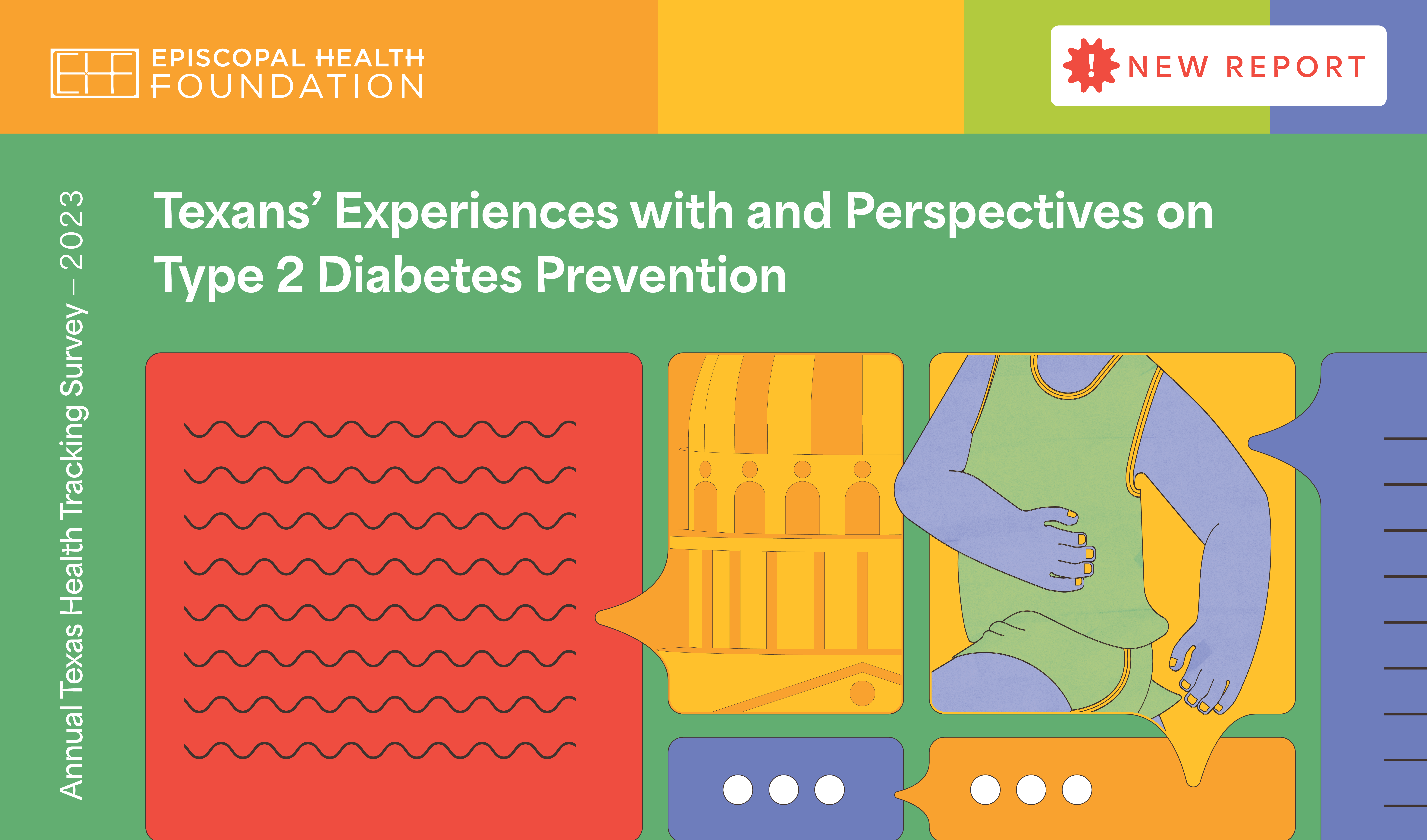Two thirds of Texans say type-2 diabetes is a major problem across the state and nearly half of adults say they live in a household experiencing diabetes or prediabetes. Those are just some of the results of a first-ever Episcopal Health Foundation (EHF) statewide survey on diabetes in Texas.
“Texas is experiencing a diabetes crisis, yet nine out of 10 cases of type-2 diabetes are preventable,” says Dr. Ann Barnes, EHF’s president and CEO. “These numbers confirm why we have to change the diabetes conversation in Texas to prevention through routine screening and by moving beyond medicine alone as a solution to this crisis.”
As part of National Diabetes Awareness Month, see EHF’s new interactive website on the Diabetes Crisis in Texas, including the statewide survey results, additional facts, and more:
EHF’s survey found that 66% of Texans view diabetes as a “major problem” in the state. Another 28% said diabetes was a minor problem.
One in 10 Texans report they currently have type-2 diabetes, according to the survey. Another 15% said they live with prediabetes. An individual who is considered prediabetic has a higher-than-normal blood sugar level and is at higher risk of developing type-2 diabetes. That risk becomes higher without increased physical activity and/or healthier eating.

Overall, nearly half of all Texas adults (46%) say they live in a household experiencing diabetes or prediabetes. Hispanic (53%) and Black (48%) Texans and those with lower incomes (48%) were more likely to live in households battling diabetes/prediabetes.
“Diabetes increases the risk for heart disease, stroke, and kidney disease, and is largely influenced by non-medical factors like access to affordable nutritious food and opportunities for physical activity,” Dr. Barnes says. “For neighborhoods with fewer of those resources, the battle to prevent diabetes becomes much harder.”
Families experiencing diabetes are more likely to have trouble accessing, affording care
EHF’s survey found that 71% of households experiencing diabetes and prediabetes say they have skipped or postponed some sort of health care because of the cost. That includes things like check-ups, treatments, tests, and filling prescriptions.
In addition, 46% of households with diabetes say they had problems paying medical bills compared to just 29% of households without diabetes.
“Skipping tests and checkups is even more significant for those with diabetes or at-risk for diabetes,” says Dr. Barnes, a physician who previously oversaw clinic services at several safety-net health systems in Texas. “Even someone who is prediabetic can begin to have damage to blood vessels that increase the risk of heart attack, stroke, and kidney disease. Any delay in care is significant.”
Non-medical factors have a major impact on those with diabetes
EHF’s survey found that households with diabetes are more likely to say they should eat better and exercise more. More than three quarters (76%) of Texans in households with diabetes say their daily diet could be healthier and 74% say they should be getting more physical exercise.
“While lifestyle choices are an important part of diabetes prevention, not all families have the same ability, access, and income levels to make those changes,” Dr. Barnes says. “Many neighborhoods lack places to walk, play, and exercise and families can’t always easily travel to other areas that do. The same is true for healthy food options.”
Many Texans say increased access to care and screening would be effective ways to prevent type-2 diabetes
Two-thirds of Texans (66%) say that increased access to preventive health care, including routine screenings for diabetes, would be “very effective for diabetes prevention” in the state.
Majorities of Texans supported other potential solutions for diabetes prevention:
62% Encourage doctors and nurses to discuss diabetes risk
59% Provide free or reduced-cost health insurance to low-income Texans
53% Provide educational resources and classes on healthy eating and physical activity
In addition to these ideas, Texans believe certain groups and organizations should have an impact on reducing diabetes, including doctors and nurses (76%), food companies (70%), health insurance companies (67%), state government agencies (65%), and county or local governments (62%).

Dr. Barnes: EHF’s survey should serve as a call to action for diabetes prevention in Texas
Type-2 diabetes is one of several negative, but preventable, health-related conditions that cannot be improved by medicine alone. Texans with lower incomes and other underserved communities are disproportionately affected by the disease.
That’s why EHF named Diabetes Prevention as one of its new Priorities for Change. The foundation believes that moving the needle in preventing type-2 diabetes across the state will lead to a ripple effect of good health in Texas.

Methodology
SSRS examined diabetes in Texas as part of the 2023 Texas Health Tracking Survey on behalf of EHF from October 18 – December 19, 2023. Similar studies have been fielded on behalf of the EHF since 2018.
This latest survey was conducted online and by telephone with a representative sample of 1,956 Texas adults (age 18 or older). Interviews were administered in English (n=1,843), Spanish (n=87), Chinese (n=19) and Vietnamese (n=7). The survey data are weighted to match the sample demographics to estimates for the Texas adult population. The margin of sampling error for this study is +/- 3 percentage points for results based on the total sample.
